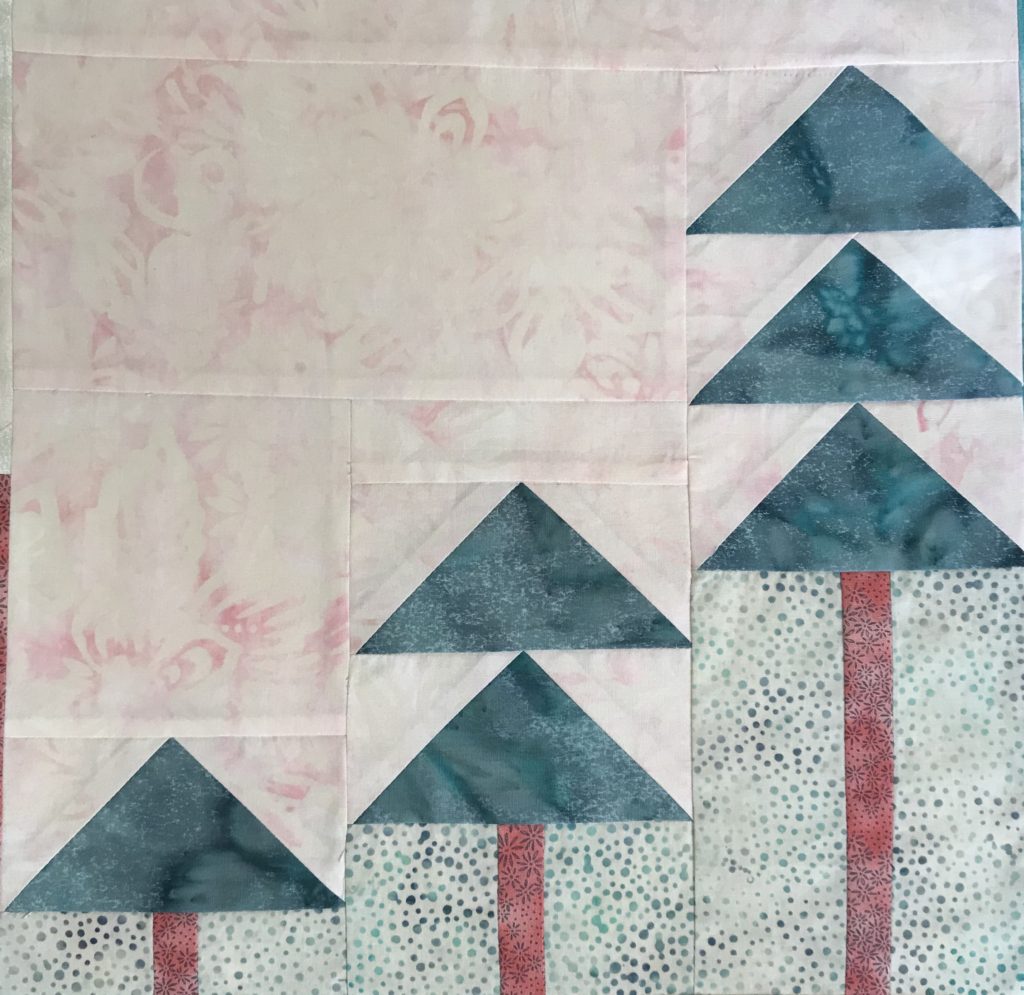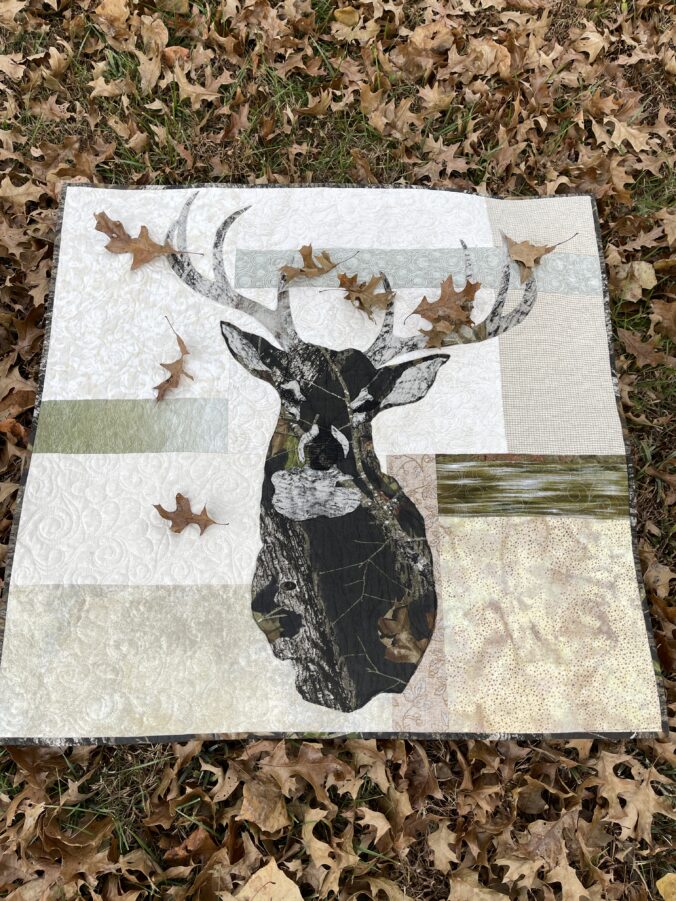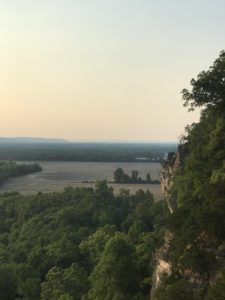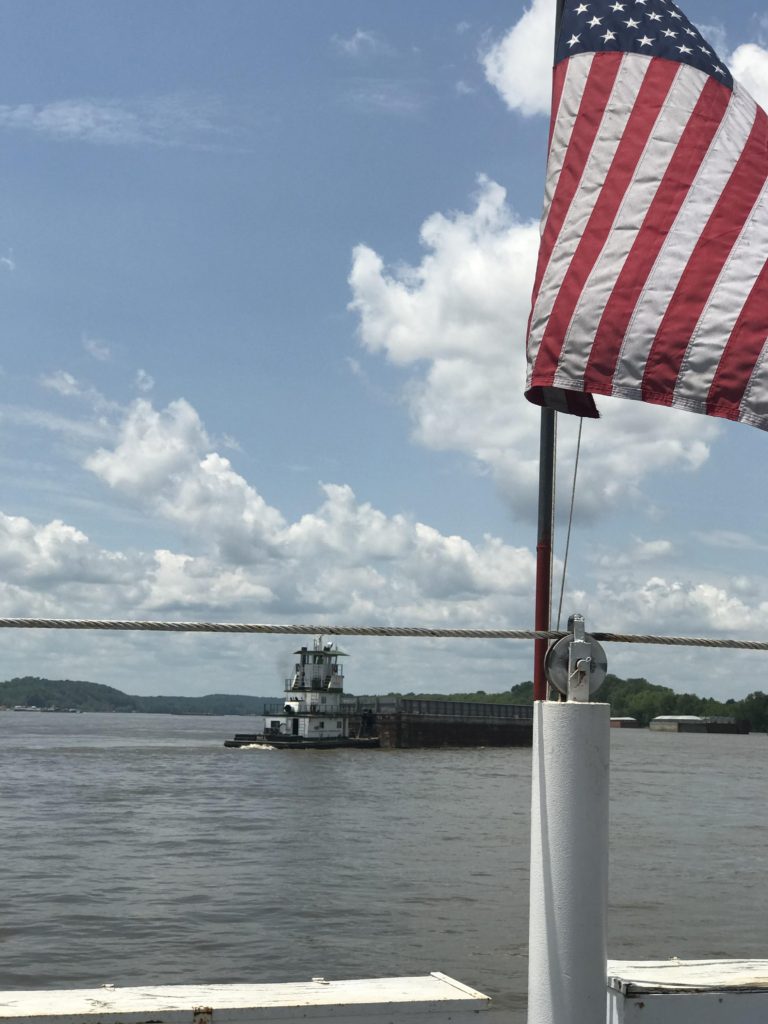Estimated reading time: 6 minutes
Table of contents
- River Heritage Mystery Quilt Reveal!
- The sunset over the Mississippi River is your final clue that the mystery has ended.
- In addition, Watch for the River Heritage quilt on YouTube! SUBSCRIBE today!
- Most importantly, be assured as you look at this mystery quilt reveal, that this quilt goes together quickly and easily! It’s sew much fun.
- The nine blocks.
- Click here for printer-friendly River Heritage Setting Instructions: River Heritage Setting Instructions
- Furthermore, the Prairie Point Hanging Method is included in the quilt finishing instrucitons.
- River Heritage Takes a Ribbon!
River Heritage Mystery Quilt Reveal!
The long awaited mystery quilt reveal for the River Heritage Block of the Month Quilt is here!

The sunset over the Mississippi River is your final clue that the mystery has ended.
First, let’s take the mystery out of this right away. Here is a digital photo of the grand layout of this quilt. As you know, the monthly block patterns have each had a connection to life by the river. Finally, it’s time to take all of those wonderful blocks and set them in this really fun, fast design.

In addition, Watch for the River Heritage quilt on YouTube! SUBSCRIBE today!
Most importantly, be assured as you look at this mystery quilt reveal, that this quilt goes together quickly and easily! It’s sew much fun.
Firstly, let’s review the blocks you’ve made starting at the center top and moving clockwise.
The nine blocks.
- Eagle’s Nest
- Hovering Hawks
- Lighted Bridge
- Tree Line
- Railroad Crossing
- Trail of Tears
- Port and Starboard
- Flock of Geese
- The center-most block is Paddle Wheel

Click here for printer-friendly River Heritage Setting Instructions: River Heritage Setting Instructions

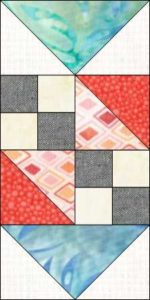


In addition to getting the full pdf instructions, browse through these images of the mystery quilt reveal. You’ll see how simply and easily this quilt goes together.

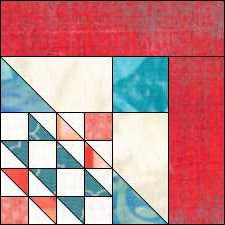



Furthermore, the Prairie Point Hanging Method is included in the quilt finishing instrucitons.
Obviously, I used the Prairie Point Hanging Method for this wall hanging. It’s the best kept secret and a mystery quilt reveal of its own! However, instructions for this wonderful hanging method are included in all 50+ of my Creative Bee Studios patterns!
River Heritage Takes a Ribbon!

In conclusion, I hope you’ve enjoyed making River Heritage! I was pleasantly surprised to find a beautiful ribbon on my quilt this weekend at our local quilt show!
Of course, I’d love to see your finished quilt! Please share your quilt pictures on Facebook and Instagram using the hashtag: #riverheritage in your post!
Last but not least, most of the blocks in this quilt are classics, found in many books and other sources. I created Paddle Wheel, Tree Line, and Lighted Bridge are blocks to fit our theme and the setting. Moreover, the setting is adapted from the book, Circle of Nine by Janet Houts & Jean Ann Wright. I love this book and recommend it (available on Amazon)!
This has truly been an adventure! From coming up with a theme, choosing and creating blocks, traveling to get photos and learning about my river heritage, it’s been quite a journey.
Karla



